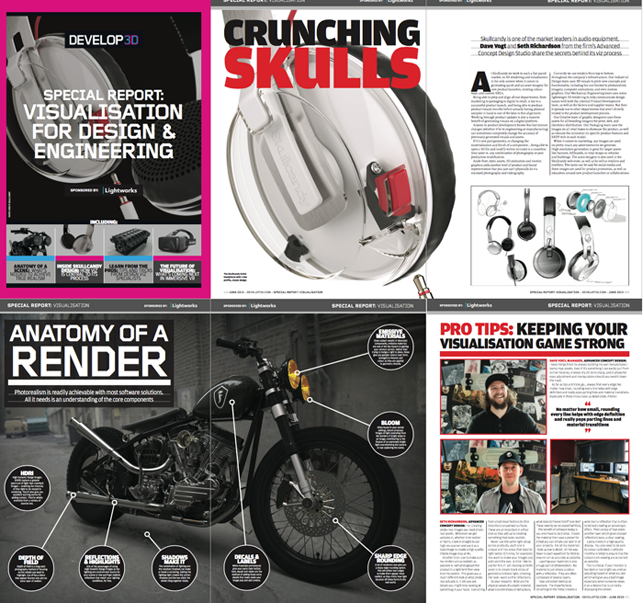
Henrik Wann Jensen
Chief Scientist, Luxion
When we first started, it was certainly an interesting time in development of different architectures and physically accurate lighting simulation.
Real-time rendering was new though and Luxion was at the forefront of developing a new way to experience this technology. We were fortunate to both have funds for investigating advanced rendering algorithms on future hardware architectures and to be working closely with Intel and AMD to ensure we were achieving optimal performance on their new chips. We were focused on the challenges that face the users and those challenges are our challenges to this day.
Many companies realise the importance of visualisation more and more, but many are not aware of what’s possible. A recent report captured that only 37% are familiar with advanced realtime rendering and a mere 15% currently use a rendering solution in house, but with an expected 10% rise over the next five years. That’s a lot of companies realising what role visualisation will play for them in the future.
So, first and foremost we have the great opportunity to introduce what is possible and how simple it can be to create photographic quality visuals of their products.
For those who currently create visuals using their 3D data, the taste for quality and realism is there and its importance increasing. Once they were satisfied with a flat-shaded, blocky screenshot of the model.
Now, when that model can just as quickly have physically accurate materials applied, lighting dropped in and all parameters adjusted in real-time, there’s the expectation of the creator to provide realism. It’s not isolated to an executive or client who is outside of the process.
These are the creators themselves who want it integrated into their process. So, this shows us directly how important speed and accuracy is to them and how important it is to deliver the tools that complement their workflow throughout the design, development and manufacturing process.
Of course, with this increased awareness, seeing how powerful KeyShot is and realising how important visuals can be, designers, engineers and 3D professionals require the ability to deal with massive assemblies, multiple configurations and incompatible data sets with speed and accuracy within their existing workflow or companywide processes, processes from 3D printing to PLM and digital mock-ups to sales and marketing.
All of this encapsulates the challenges we are addressing, and when you include both the hardware and software aspects there are a lot of details to the product design workflow that need to be nailed down, everything needs to work together and, most importantly, be that indispensable part of the user’s workflow that makes the experience more enjoyable and provides the results they need.

Dave Hutchinson
COO & CEO Lightwork Design
3D visualisation is widespread and apparent in nearly every aspect of our lives; television, film, games, product design, architecture, manufacturing and sales and marketing.
Most users, and consumers, aren’t aware and moreover don’t care whether the visuals they interact with are photographs or computer generated so long as they meet their expectations.
In addition, they’re often unaware of the enormous creative undertaking and design resource that’s required to generate even the most simple visual. This is where the challenge lies for the visualisation industry — meeting the growing demand for quick, cheap, easily created high-quality visuals.
Consumers’ expectations have changed. They now want top of the range visuals in every aspect of their purchasing and entertainment experience — this cost must be factored into every aspect of the design and creative process. Companies are often surprised at the cost of high-end visualisation and may have to balance their aspirations against budget constraints; if money is no object then the technology is available.
Moving forward the challenge shifts from enhancing the consumer experience to making sure companies have access to high-quality visualisation at any point within their workflow and this means integrating the same visualisation technology across their toolset. This will improve design-review timescales, save money and remove the dependency on costly third party bureauxs.
There is a growing trend towards manufacturers, and agencies, bringing visualisation in-house, enabling their workflows with technology that combine real-time interactivity with high-end photoreal visualisation.
No matter what industry, the main requirement is the combination of interactivity, scalability and material workflow, which saves time, money and inevitably enhances the final experience.
What the leading companies are doing now will be mainstream in years to come, we’re looking forward to being part of the evolving visualisation story.

Corey Rubadue
Director & product manager, Chaos Group
For us, this is a very exciting time. Access to technology has grown considerably by way of advancements in hardware, refinement of the cloud, and the continued momentum of virtual reality (VR).
We’re actively engaged in pushing the limits of hardware and the cloud and I believe these developments will benefit visualisation and design, especially when it comes to ideation and feedback. Already today’s visualisation and results are converging with the manufactured product and built work.
With this democratisation of technology there will be greater need to define accessible workflows that culminate in dependable and physically accurate results. I think this will enable better communication of design and an opportunity for more points of view within the industry.
For a while we’ve researched how best we can utilise the cloud, something more than uploading assets and waiting for results.
The V-Ray Cloud platform is a fully-customisable OEM solution that can utilise GPU or CPU calculations, and is flexible for in-house private networks and larger public cloud solutions like Google and Amazon.
Shooting the short film CONSTRUCT has been a successful testing ground for massively parallel computing on hundreds of thousands of cores simultaneously — basically using the cloud as a super computer. Designers will be able to see and test iterations in real time.
One thing we think will be very important for design on many levels is reality capture. Consistent, reliable, and accurate results are a challenge, and can be vital for effectively communicating a design.
Chaos Group is introducing something related to this in the near future that addresses this issue specifically.
Virtual reality has opened up a lot of possibilities and is a huge opportunity.
Last year we partnered with Nurulize for their work in VR technology, and today we’re looking into virtual prototypes that will allow a designer to interact in a more meaningful and visceral way.
Realism has become a given in rendering, and ease-of-use will democratise the process even further.
To put rendering in the hands of more people, you have to cut out the areas that are difficult for users and enable them to plug in anywhere they’re designing.
This is why we’ve remained invested in CPU and GPU in the cloud, in addition to virtual and augmented reality.
I think we’ll see a major explosion on the demands of rendering as it becomes more readily available and transparent to the design process.”

Yazan Malkosh
Head of design, The Foundry
As product creation accelerates in our world, so does the need to have instant visualisations supporting those products, both pre and post design.
Traditionally, early visualisation was done by hand. Now that we have everything living in the digital realm, you’d think it’s an easy button labelled “visualise.” It’s not.
We still face multiple obstacles, including data reuse across any design process, localisation, personalisation challenges, variation control and finally, ease of use for the actual process of visualising your data in meaningful ways.
One of these challenges? Taking data created during the design process and outputting visualisation content. And I don’t mean just rendering.
I mean the ability to output to realtime 3D engines or interactive environments.
Unfortunately, as most data comes from CAD, it’s still pretty heavy and requires a ton of work before it’s ready for primetime.
Therefore, we need to have this part of the process streamlined and automated, which I hope will happen soon. Certainly some of the steps have started taking place but we are not there yet.
Another key challenge? Personalisation of visualisation. We can personalise design for you, why not visualisation? Why can’t I see the garment on my body? Or the watch on my hand?
I believe companies want to take this next step, creating an emotional, 1:1 visual link between the consumer and the product. This isn’t without its challenges.
As an industry, we need to solve the previous data issue first and then move to providing technology that utilises that personal data in a meaningful and secure way.
Things like personal avatars, 3D scans and live projection will become increasingly critical to the product sale experience. To achieve this, the industry must build technologies supporting these elements.
Visualisation will only grow in importance.
As our world gets consumed with tons more products and drowned in the visual media behind it, the consumer will look to see things that speak to them in a more attractive and interactive manner.
This will require new methods of data presentation, which means visual creation tools need to evolve to handle these new age requirements.







